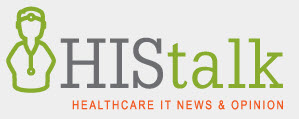09-08-2016, 01:29 AM
Survey:8 in 10 Hospital Leaders Say Predictive Analytics is Important to Future Yet Only One-Third Use It
Lackof appropriate tools and trained personnel ranked as top barriers to adoption
SALT LAKE CITY – Sept. 7, 2016 – Nearly 80percent of hospital executives believe the future of healthcare could be significantly improved through the use of predictive analytics, a population health management tool that can help providers stay one step ahead of costly problems like preventable readmissions, patient downturns and contracts with insurers that pay less than the cost of providing care. Yet only 31 percent of hospitals have used the technology for more than a year, and 19 percent have no plans to do so.
Those results from an August survey of 136 hospital and healthsystem executives by Health Catalyst point to potentially significantbarriers to the adoption of predictive analytics. They may also signal pent up demand for the advanced form of analytics, which has been touted as a solution to many of healthcare’s problems and as key to the development of more effective “personalized” treatments for common diseases such as cancer.
Topbarrier to adoption: “Right data or tools”
Both current users and non-users of predictive analytics agree (32%)that the top barrier to its adoption is the lack of appropriate data or tools and infrastructure, according to the survey. That result is not unexpected since producing reliable predictions of future probabilities or trends requires both an accessible and trusted source of data aggregated from multiple IT systems—electronic health records (EHR), financial systems, etc.—as well as analytic applications to drive the predictions and make them easy for front-line staff to use.
Survey respondents said the next most significant barriers to theuse of predictive analytics were a lack of people or skills (26%) and a lack of executive support or budget (20%). Few seem to question the effectiveness of the technology; only one respondent said past efforts had failed to show results. And despite the relative youth of predictive analytics technology, confidence in its accuracy ranged from neutral to very strong among respondents. Only 2 percent said the technology produces inaccurate results.
Pentup demand?
Apparently driven by faith in predictive analytics’ ability todeliver meaningful results, demand for the technology appears to be strong among hospital leaders. In addition to the 31 percent of respondents who already use it, 38 percent said they plan to adopt predictive analytics within the next three years. Fourteen percent of that group said they will adopt it in the next 12 months.
Still, nearly one-third of the survey takers are on the fence. Inaddition to the 19 percent who said they have no plans to use predictive analytics, another 11 percent are unsure whether they will use it in the future or not.
Even among those who plan to adopt predictive analytics, few saidthey have the budget to allocate significant resources to the effort. Most (37%) are tip-toeing into the space with commitments or planned commitments of 1-3 people devoted to the task of leveraging analytics for predictions. Only 8 percent said they would allocate more than four people to that role. Thirty-four percent of respondents said theywere unsure how many people they would have work in the area.
Preventivecare tops list of uses
Both current users of predictive analytics and prospective usersagreed (58%) the top priority for its use is to alert caregivers to interventions that may prevent health declines among high-risk patients, according to the survey. Asked to name the top three priorities for the use of the technology, respondents assigned the second and third spots to predicting financial outcomes (such as patient cost or likelihood of patients to pay their bills) (52%), and improving the ability of providers to negotiate contracts with insurers (42%).
Other priorities for predictive analytics identified by surveytakers were projecting patient health outcomes and satisfaction (38%) and improving the quality of diagnoses (33%). Falling last on the list of priorities was the forecasting of staffing and supply chain needs (27%).
EHRtops list of preferred data sources
When asked to list the top three sources of data for makingpredictions, respondents most often selected clinical data from the EHR (80%). Tied for second as important datasources were claims data and patient outcomes data, both selected by 53 percent of respondents. Financial data was the next most selected category (50%), followed by non-medical patient demographics (22%) and patient satisfaction data (21%).
“Overall, the survey findings point to a growing need within theprovider community for solutions that help to identify long-term rising-risk patients who are on their way to becoming high-cost consumers of heath care,” said Levi Thatcher, Director of Data Science at Health Catalyst. “With an ever greater light being cast on system-wide inefficiencies, providers are hungry for analytics that will help them identify and treat these patients before their health deteriorates, bothimproving their lives and reducing needless spending across the system.”
Methods
Survey results reflect the opinions of 136 healthcareprofessionals who responded to an online survey in August 2016. Respondents included 34 CEOs; 18 chief financial officers; 26 chief information and chief medical information officers; and a variety of other executive and departmental leadership roles. They work for organizations ranging from some of the nation’s largest urban academic medical centers and integrated delivery networks to small, rural critical access facilities.
About Health Catalyst
HealthCatalyst is a mission-driven data warehousing, analytics and outcomes-improvement company that helps healthcare organizations of all sizes perform the clinical, financial, and operational reporting and analysis needed for population health and accountable care. Our proven enterprise datawarehouse (EDW) and analytics platform helps improve quality, add efficiency and lower costs in support of more than 70 million patients for organizations ranging from the largest US health system to forward-thinking physician practices. For more information, visit https://www.healthcatalyst.com, and follow uson Twitter, LinkedInand Facebook.
Media Contact:
Todd Stein
Amendola Communications
916-346-4213
tstein@acmarketingpr.com


